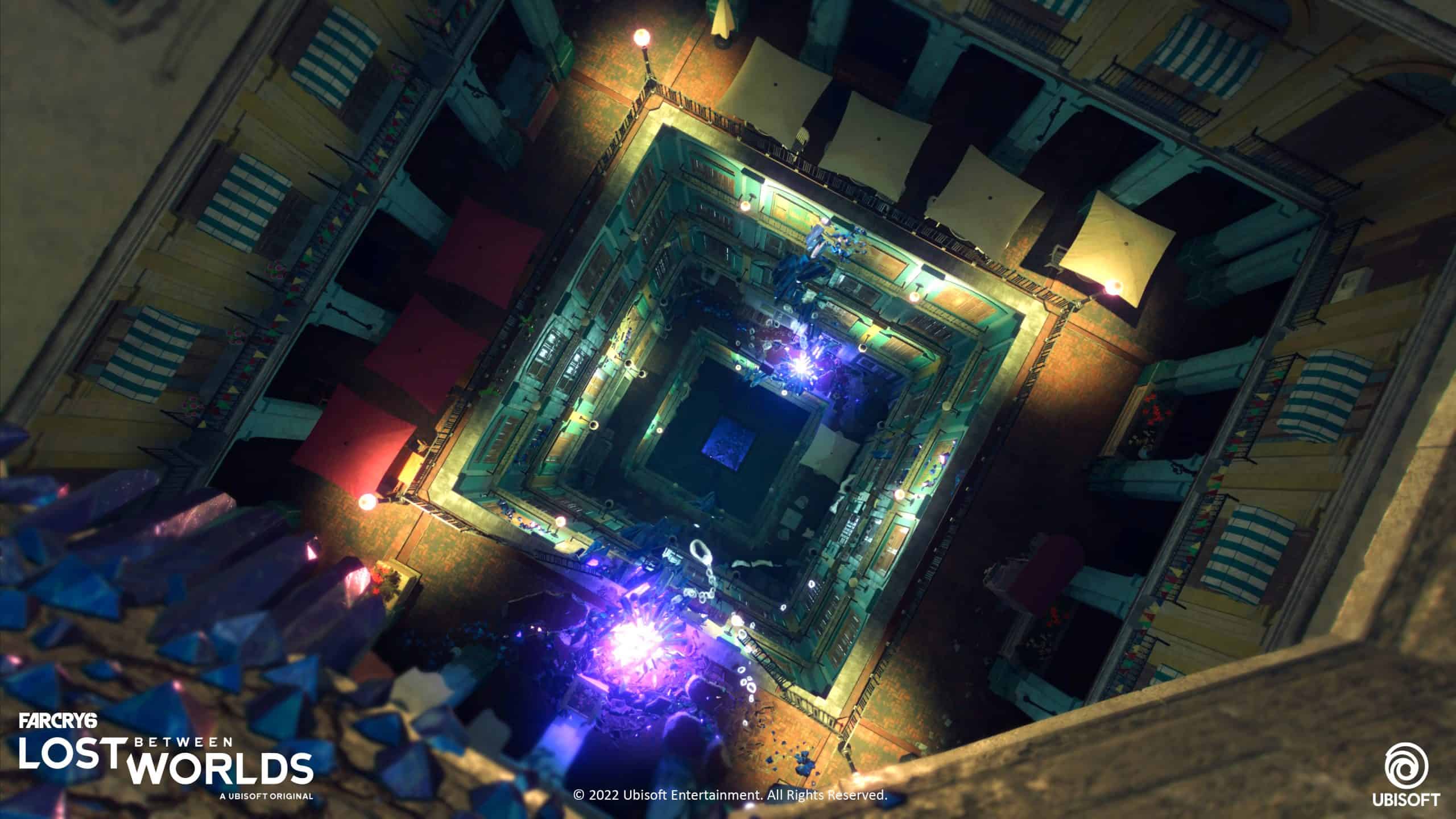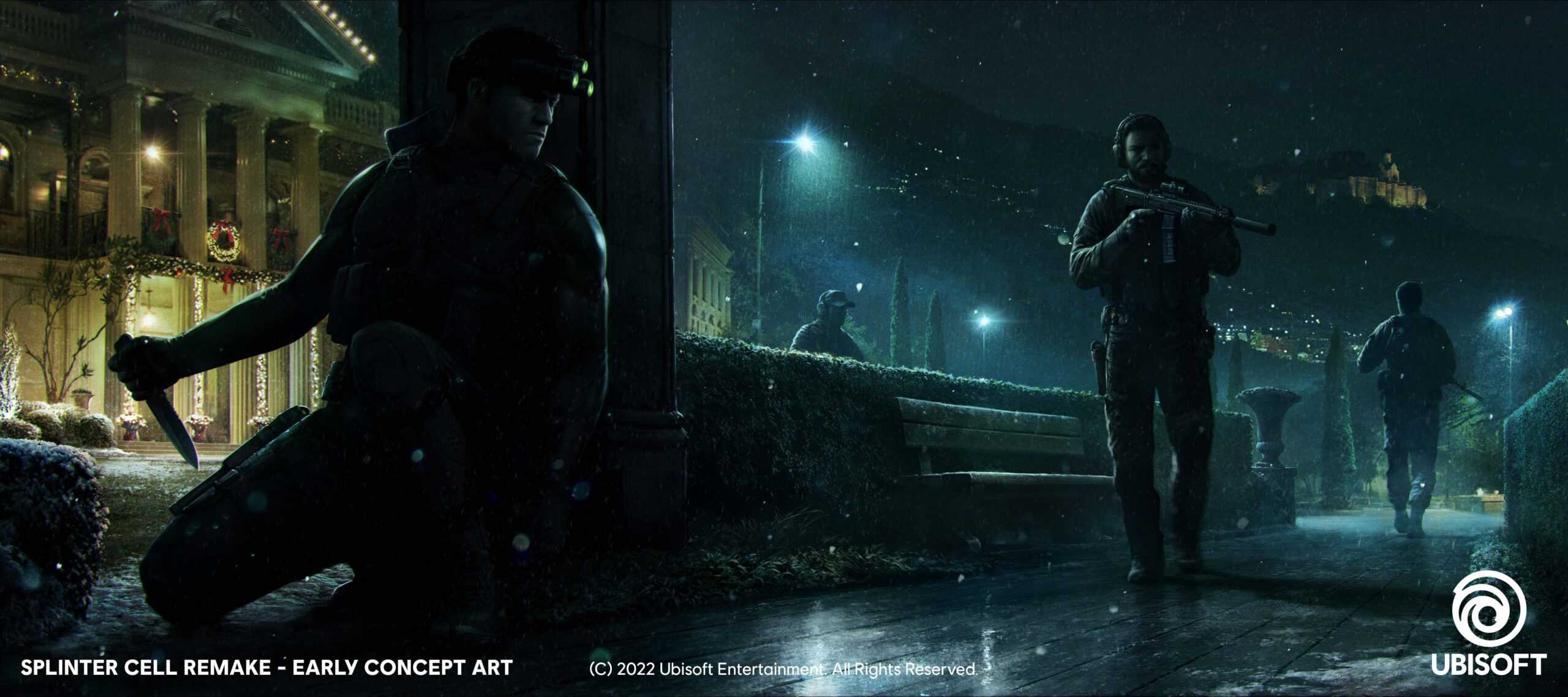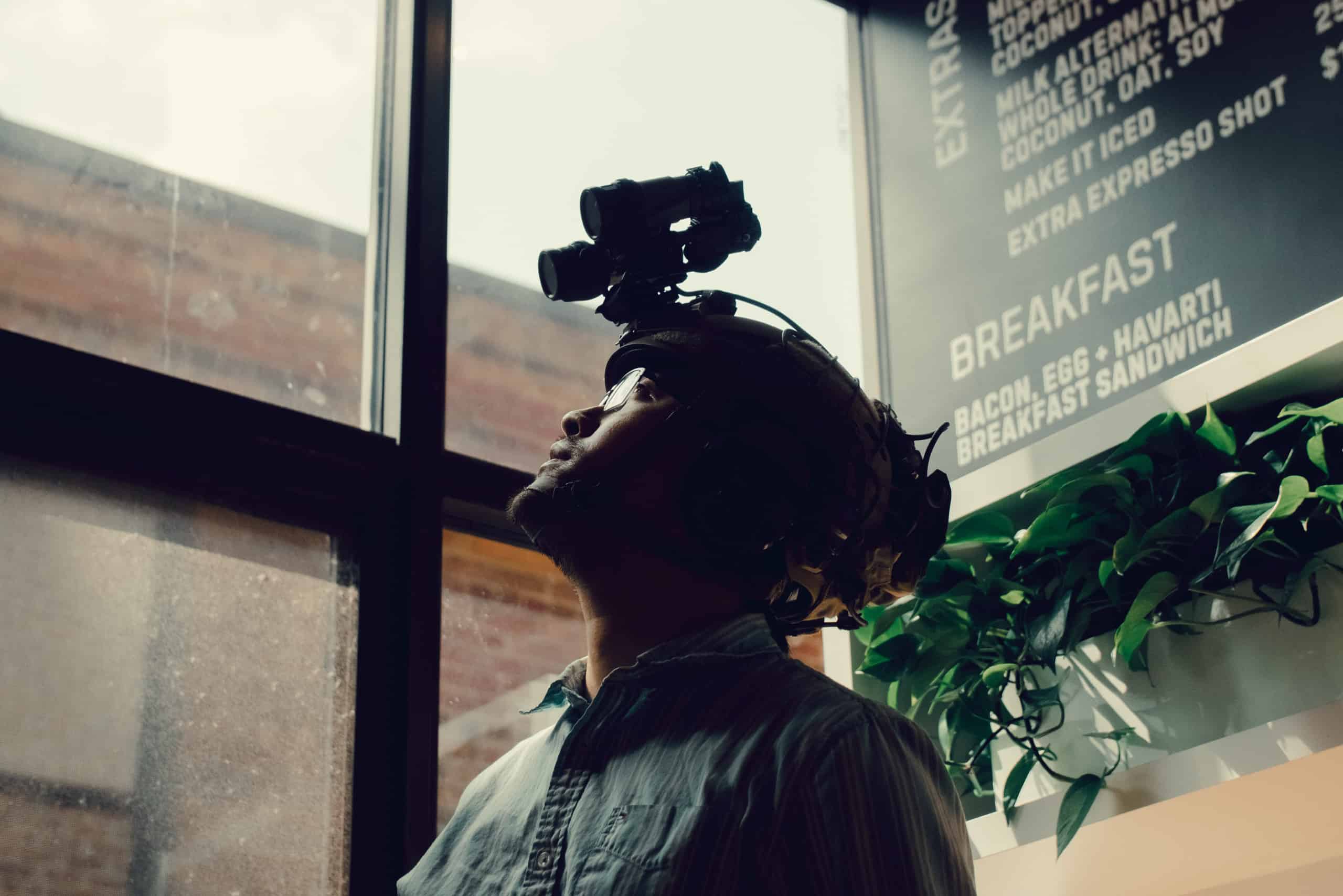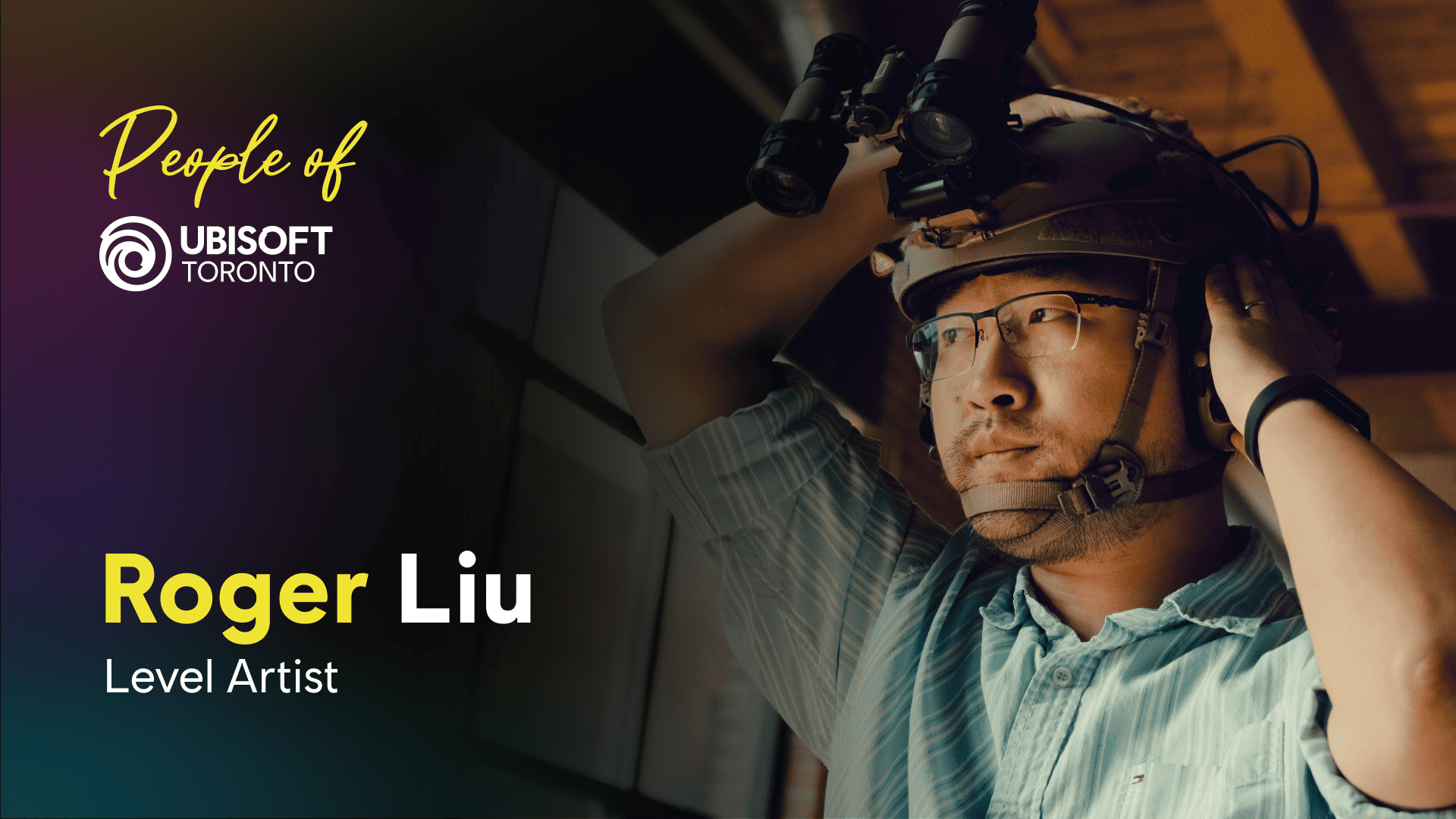Does life imitate art or does art imitate life? For Roger Liu, it’s a little of both. A veteran Level Artist whose work at the studio stretches back over 10 years to Splinter Cell Blacklist, he shares how his passion for the franchise fuels his work today on the Splinter Cell remake, and how it’s led to a rather interesting hobby!
Hey Roger, tell us more about what you do as a Level Artist? And what’s your favourite thing about your role?
The scope of a Level Artist can be pretty wide. From designing an entire town from the ground up (that includes infrastructure of roads, powerlines, buildings and landscaping) to miniscule details like placing blades of grass and positioning a water puddle on a road. All of these are important to assist in world building and creating a believable picture of a location.
The process often involves many teams — concept art, level design, narrative, and technical art. As Level Artists, we begin the process with an enormous amount of photo reference gathering and digging into the history of the location we intend to replicate. We work closely with concept art and level design to block out areas in a level with gameplay in mind. Over time, the location will get more and more fleshed out. You can say every blade of grass and every stone is checked and placed with care by the end of the production.
What I enjoy most is seeing players’ reactions when experiencing the environments we crafted. Seeing their enjoyment makes the huge team effort worthwhile at the end of the day!
About your role
How did you pick up the skills required for your role?
I started with my love for visual art, design, engineering, and history. Regularly practicing traditional drawing, and continuously reading and learning have kept me going and growing.
My advice for anyone interested in level art is to keep on creating art, whether it’s drawing, painting, or something else! A good foundation in art gives you a head start. Don’t be afraid to try everything! You won’t learn if you don’t try. It’s not about how much we know, it’s about how well we learn and apply that knowledge!
Working in level art, what are some elements you’ve worked on that the average player may not know or think about?
The biggest challenge is player-leading and doing so in gameplay and visuals. My favourite phrase to describe this is “herding cats.” As the term suggests we try to utilize lights, sounds, interesting visuals and events that draw players attention to entice exploration or guide them in progressing through the level.
Career development
What did you do before working at Ubisoft Toronto?
I had a bit of an unconventional path into video games. I initially did my BA in Macromolecular Cell Biology. However, I realized I did not want to spend the rest of my life in a research lab.
So I took a plunge.
I signed up for an animation program at Seneca with the idea of learning VFX, even though I wasn’t certain what I wanted to do specifically. With the help and guidance of good friends whom I met through the program, it became clear to me that I wanted to shift towards video game art.

What’s your favourite project that you’ve worked on?
I would pick Far Cry 6.
We were able to put together a giant town with full player access (including the rooftops!), which was a notable achievement especially doing so within the technical load constraints.
The town was filled with life! Lots of heart and care went into designing every aspect of the town, from working out a proper sewage drain system to channel rainwater to a lower elevation, to roads that are teeming with traffic. Sidewalks and town plazas bustling with pedestrians and vendors.
The location had to be believable as a living space with every inch we kept asking ourselves, “What would I do as a resident living in such a space, given the conditions?”

You’ve worked on multiple Far Cry Games, most recently the Far Cry 6 DLC Lost Between Worlds. Can you tell us about a key task or strategy on that project and how you approached it?
One of the more memorable levels was the Sunken Esperanza Rift. It was set underwater so not only were the visuals unique to the rest of the game, but the player also had full 360-degree traversal which meant new challenges for level design such as finding a way to guide the player from point to point. We experimented with some concepts to see which method was most effective at attracting the player.
Then, we had a very lengthy conversation with tech and VFX to determine how to approach this. Since the player can see many visual interests in any given view, we needed to determine the maximum we can deliver within our given constraints.
Over the course of development, the level went through multiple optimizations to smoothen the gameplay. After all, this is a game and player experience is everything to us.
In the end, it’s all thanks to Sound, VFX, Tech, and Directors working closely together to allow such ambitious dreams to be brought to life!

Upcoming projects
What are you currently working on for the Splinter Cell remake? Please share what you can.
It’s so exciting to be working on Splinter Cell levels I enjoyed back in the day. The design team and I are big fans of the original and we’re looking for ways to push level design and visuals further with today’s tech, while staying true to Splinter Cell’s stealth core. Am very much looking forward to fans experiencing it!
Any special memories or events related to the Splinter Cell games?
I bought my Splinter Cell copy from a budget bin. At the time, I did not think much of it until I started playing. I was blown away! It was the first full 360-navigation stealth game, and the night vision, thermal vision, and tons of other gadgets were really cool. To this day, it remains one of my favourite 360 stealth games.
Partially inspired by the game, and through the influence of a good friend, I picked up an interest in night vision and thermal vision tech. I learned about the tech and the history behind it, which led me down a series of very expensive life choices. 😅 I currently own night vision and thermal devices and a number of related accessories. I also design and make my own items on the side as a hobby.
I even had the opportunity to tap into my passion and share it with our team in a session dedicated to experiencing and understanding what night vision and thermal devices are really like. Being able to share that with the team and assist with the authenticity of our work was very exciting and fulfilling!

Life at Ubisoft
You’ve been at Ubisoft Toronto for nearly 11 years! That’s awesome! What drew you to the studio? And what’s the main reason you’ve been a part of the team for more than a decade?
I joined the studio right after graduation and was working on Splinter Cell Blacklist. The sheer amount of amazing talent congregated together on this project, and seeing the incredible things people brought to the table was overwhelming and inspiring! I was also surprised by the massive amount of help I received, both professionally and personally, as a fresh grad who knew very little about the industry.
11 years later, I’m still having a blast working with everyone here. Everybody is very collaborative and I always find it fascinating to see the interesting and unique perspectives from different folks on a singular topic.
Can you describe the level art community within Ubisoft?
It’s a very positive and goal-driven community. Everyone is open to new ideas and spurs each other to grow. The culture of being able to ask anyone anything is my favourite.
People of Ubisoft Toronto is a series featuring studio members from a variety of projects and backgrounds as they share their experiences at our studio, perspective of the video game industry and, perhaps, even a sneak peek of what they’re working on!
Our studio values diversity and believes in embracing differences to build stronger and more creative teams. We welcome people who would like to join us and redefine the future of games. Visit our careers page for more information on open roles and how to apply. To know more about our studio members and culture, click here.

